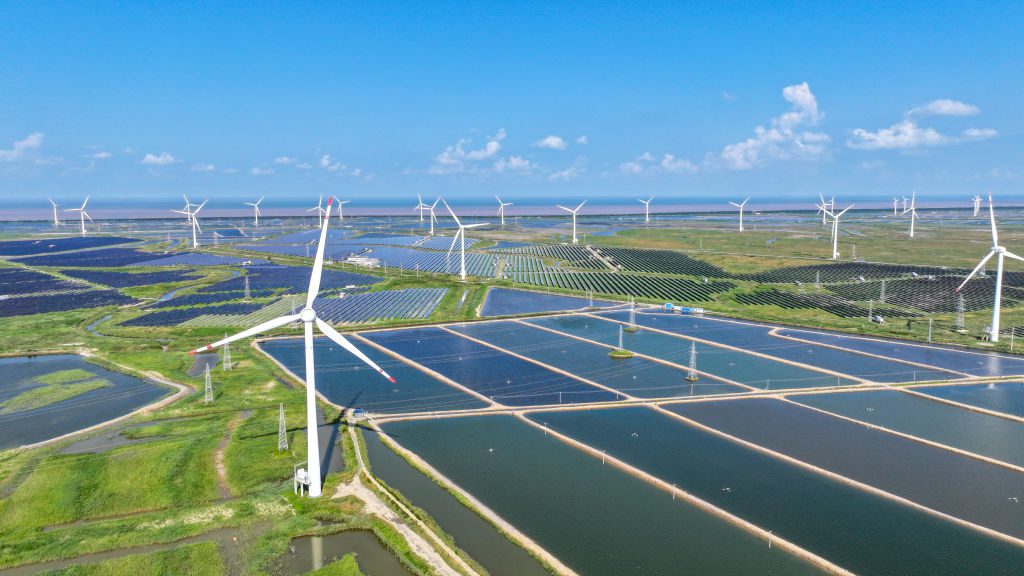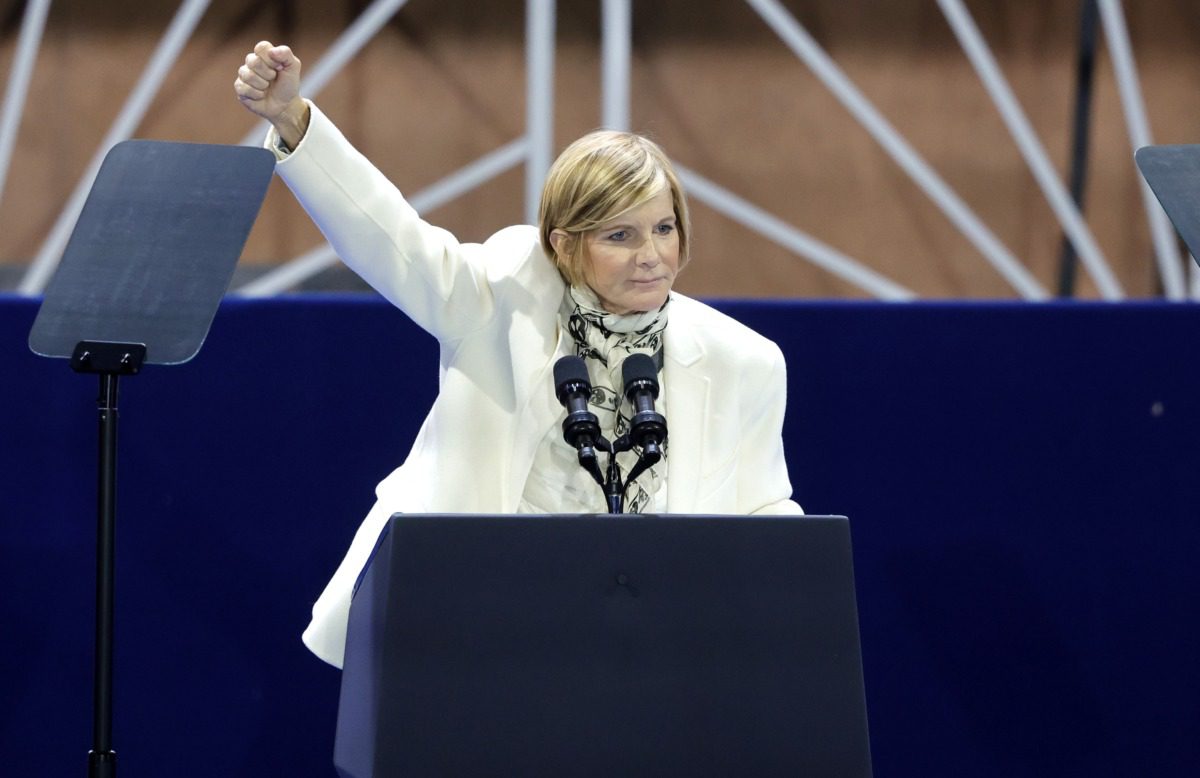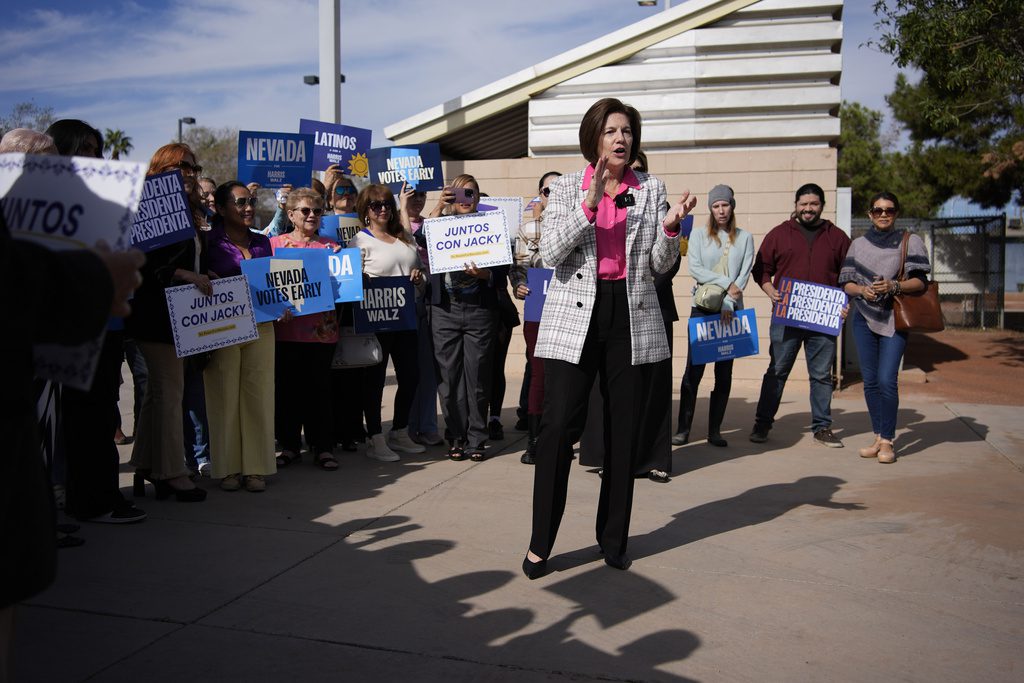
The law ensured that 21,000 Nevadans were able to keep their health insurance, reduced the cost of insulin for nearly 11,000 Nevada seniors, and incentivized manufacturers to invest in the state and create more clean energy jobs. (Photo by Costfoto/NurPhoto via Getty Images)
The Inflation Reduction Act ensured that 21,000 Nevadans were able to keep their health insurance, reduced the cost of insulin for nearly 11,000 Nevada seniors, and incentivized manufacturers to invest in the state and create more clean energy jobs.
Two years ago today, the Inflation Reduction Act (IRA) was signed into law.
The legislation represented the largest-ever investment in fighting climate change, lowered health care and prescription drug costs, raised taxes on corporations, and boosted funding for the Internal Revenue Service to go after wealthy tax cheats.
The bill was passed with only Democratic votes—including Nevada Senators Jacky Rosen and Catherine Cortez Masto—with every Republican in Congress voting against it, despite its potentially transformative impact on the economy and the nation’s clean energy infrastructure.
Here are some highlights of how the Inflation Reduction Act has impacted Nevada:
Lower health care and prescription drug costs
The Inflation Reduction Act extended generous subsidies that helped make Affordable Care Act (ACA) health insurance plans more affordable for working- and middle-class families.
Those subsidies were introduced as part of President Joe Biden’s American Rescue Plan of 2021, and were set to expire at the end of 2022, but the IRA extended them through the end of 2025.
Roughly 21,000 Nevadans were set to lose their individual coverage and become uninsured had those subsidies expired at the end of 2022, but thanks to the Inflation Reduction Act, those people got to keep their insurance.
The IRA also reformed Medicare to lower drug costs for many of the 427,330 Nevada seniors with Medicare Part D coverage, which covers prescription drugs.
For example, beginning last year, all vaccines covered under Medicare Part D are free, and the bill implemented a $35 monthly cap on insulin for Medicare recipients.
As a result, nearly 11,000 Nevada seniors on Medicare who use insulin are now charged no more than $35 per month for an insulin prescription.
The IRA will also implement a $2,000 cap on Medicare recipients’ annual out-of-pocket prescription drug costs, beginning in 2025. In Nevada, an estimated 143,020 seniors are expected to save $434 a year each due to this provision, according to an analysis by the US Department of Health and Human Services.
Additionally, the law authorized Medicare to negotiate prices for expensive drugs with pharmaceutical companies for the first time. On Thursday, the Biden-Harris administration announced the new, lower prices of 10 expensive and widely-used drugs that were selected last year for the first round of negotiations.
The negotiations — which used the power of Medicare to lower drug costs for seniors — are expected to save taxpayers about $6 billion in 2026, when they go into effect. The new prices will be anywhere from 38% to 79% lower than the drugs’ list prices last year, saving seniors on Medicare an estimated $1.5 billion in out-of-pocket costs in 2026 alone.
Fighting climate change and saving families money on energy
Arguably the most critical element of the IRA is its provisions to reduce emissions that cause climate change and drive extreme weather events. The law aims to do this by establishing a mix of tax credits for companies and rebates for consumers in order to make the manufacturing and consumption of clean energy technologies and products cheaper.
In other words: by making clean energy—like solar, wind, and hydropower—cheaper to produce and use, the IRA seeks to hasten the transition away from fossil fuels that are one of the biggest sources of emissions.
For example, under the law, manufacturers get subsidies for building electric vehicles (EVs) and renewable energy products, and utilities get credits for choosing solar and wind energy over fossil fuel plants.
As of 2024, the Inflation Reduction Act has spurred $14.5 billion in new clean energy investments in Nevada and created 20,098 new clean energy jobs statewide, according to Climate Power.
In Nevada, several manufacturers have already taken advantage of the IRA’s incentives.
Last year, Tesla announced that it plans to launch a new, $3.6 billion advanced manufacturing project in Northern Nevada for its semi truck and batteries. The project will create two new facilities: one will be a high-volume factory for electric semi trucks, and the other will be a 100-gigawatt-hour factory for Tesla’s 4680-type battery cells. The project is expected to create 3,000 jobs in Nevada, according to the company.
Also last year, Redwood Materials, a battery-recycling startup, obtained a $2 billion loan commitment from the Dept. of Energy, in part thanks to the Inflation Reduction Act. The company will use the loan to build out a battery recycling facility in Reno which will take “end-of-life” electric vehicle batteries and automotive production scrap, process them, and churn out raw materials and products that will then be used to make new EV battery cells.
The IRA also provided $80 billion in financial rebates for millions of households to adopt those clean energy products, such as electric vehicles, solar panels, and more efficient heat pumps.
More than three million American households took advantage of the IRA’s subsidies for homeowners last year, which led to a combined savings of $8 billion, according to data from the Treasury Department. This includes 41,560 Nevada households that saved nearly $152 million, or $3,656 per household on average.

Jimmy Carter, trigésimo noveno presidente de EE. UU., muere a los 100 años
Declaración de la senadora Catherine Cortez Masto sobre el fallecimiento del expresidente Jimmy Carter Las Vegas, Nevada – La senadora...

How a government shutdown would affect Nevada
After President-elect Donald Trump rejected a bipartisan resolution to avert a shutdown of the federal government ahead of a Friday deadline, Nevada...

Trump’s AG pick Matt Gaetz withdraws as more sex with minors details emerge
Gaetz’ quick withdrawal suggests that he realized he likely wouldn’t win the votes necessary to be confirmed by the Senate following Trump’s...

Nevada Congresswoman Susie Lee wins Democratic House leadership role
Even though Republicans will retain control of the US House for now, Lee told colleagues that electing battle-tested members like her to Democratic...

Nevada lawmaker introduces bill to protect taxpayers from penalties caused by IRS delays
Nevada US Sen. Catherine Cortez Masto’s Tax Administration Simplification Act seeks to streamline certain tax processes and eliminate late fees...

Here’s who Trump has nominated to his administration so far
Trump has announced that Susie Wiles will serve as his chief of staff, has nominated Marco Rubio as his secretary of state, and has chosen Kristi...



